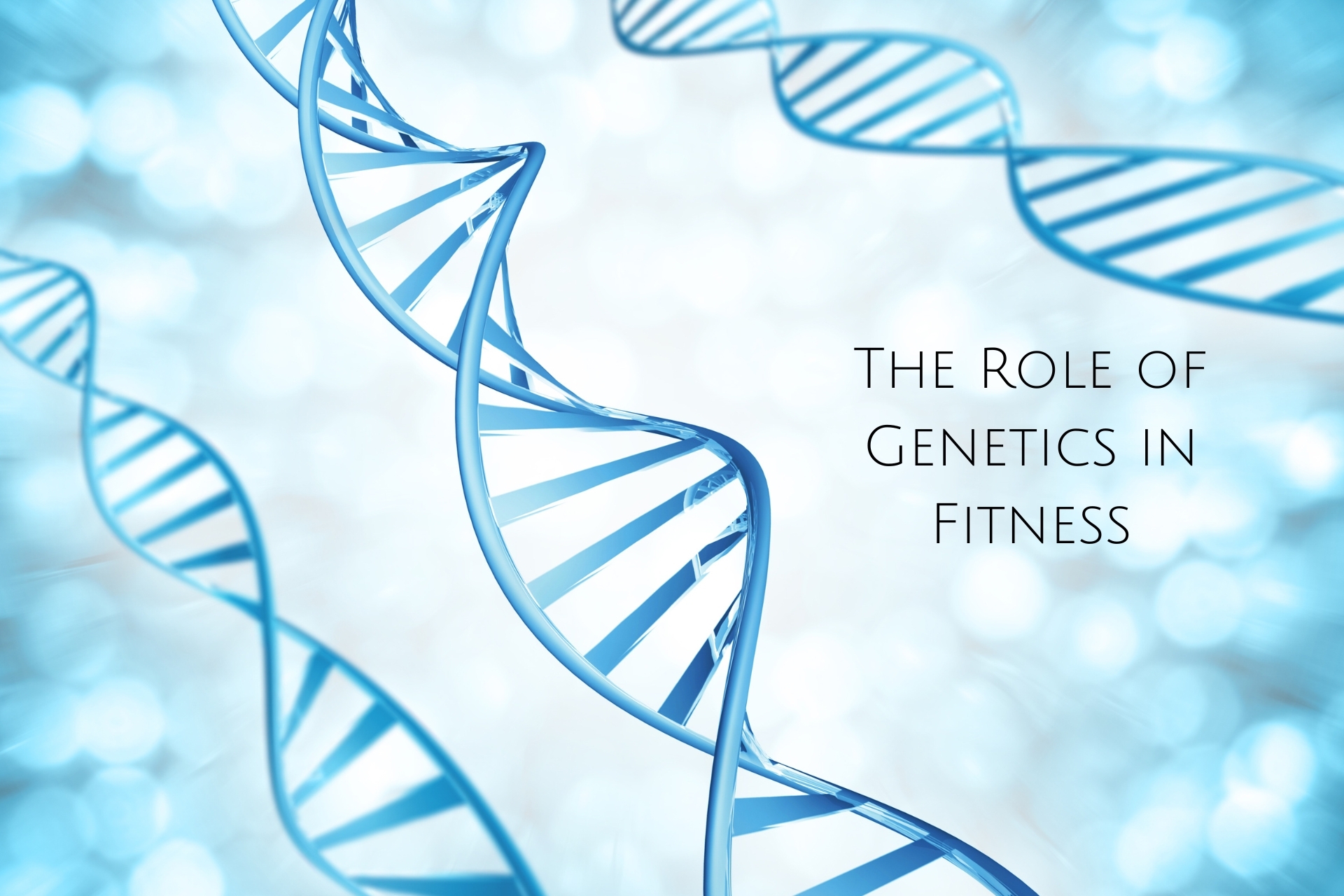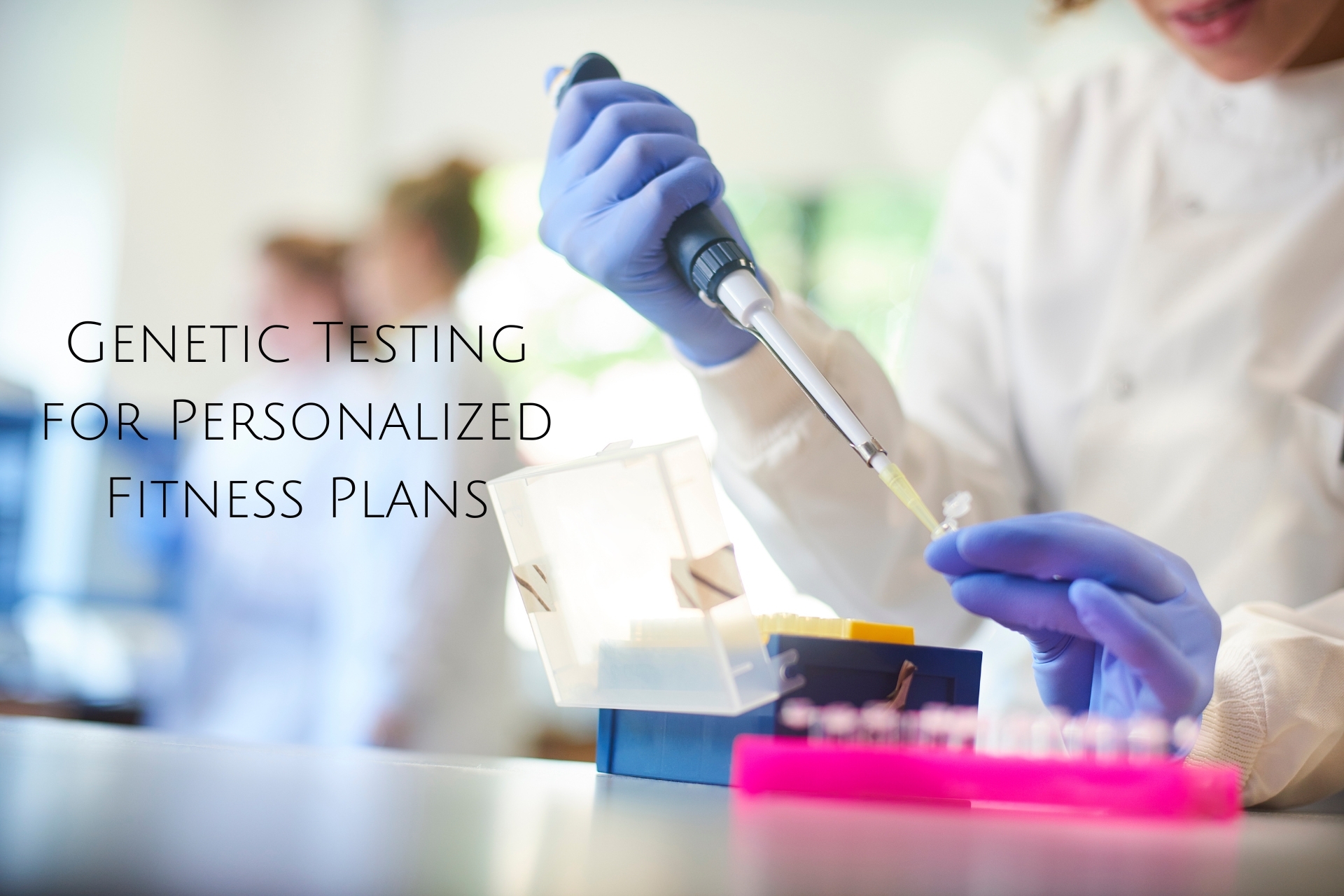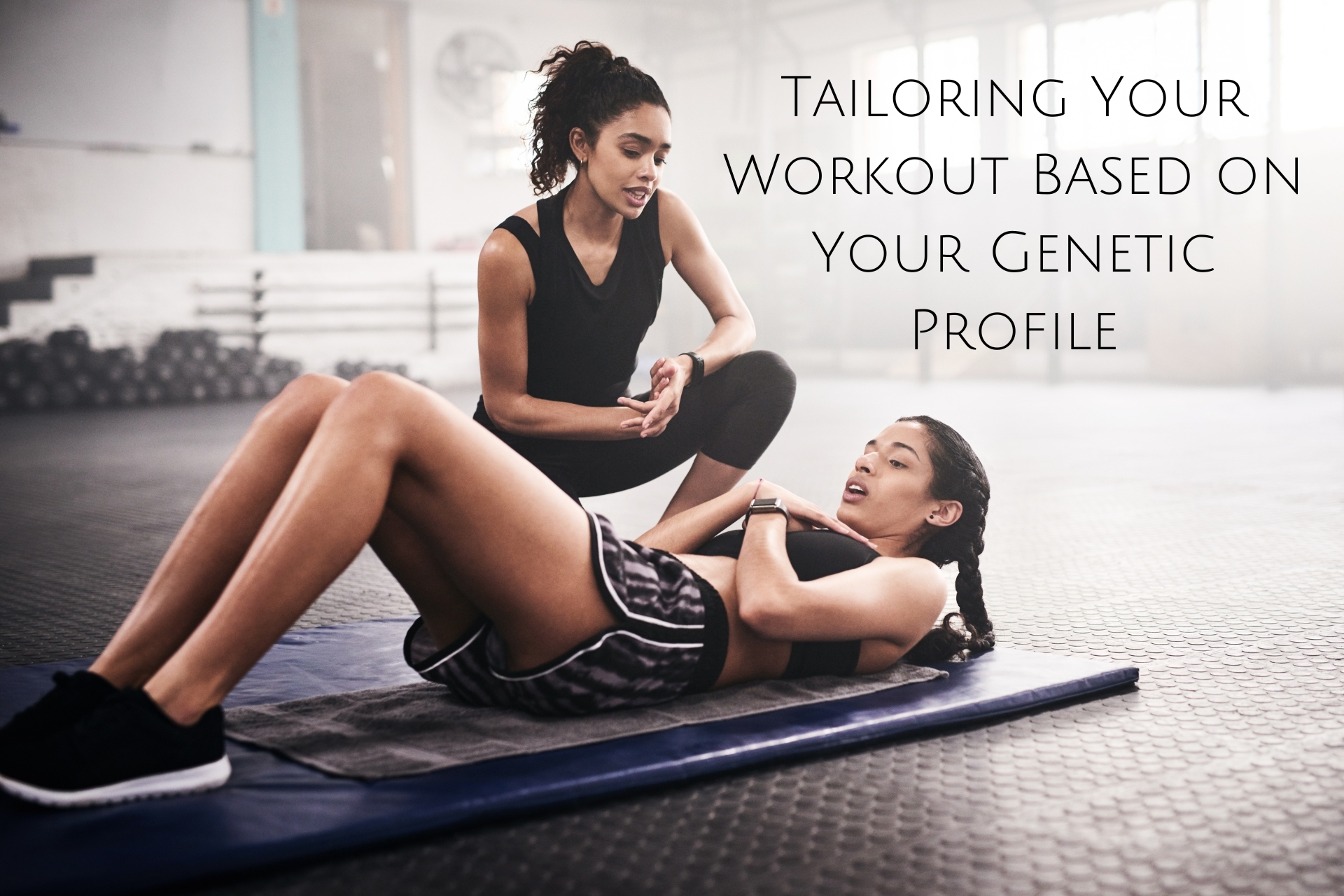The Future of Fitness: Aligning Your Workout and Nutrition with Your DNA
Fitness has always been a journey toward better health, performance, and wellbeing. For years, we've focused on the basic principles of exercise and nutrition—running, lifting weights, balancing carbs, fats, and proteins. But as our understanding of genetics deepens, we're entering an era where personal fitness can be tailored to an individual’s DNA, unlocking potential in ways we never imagined before.
Imagine a world where your workout and nutrition plans are not just based on general advice, but on the unique blueprint of your genetic makeup. This personalized approach could provide you with insights on the best exercises for your body type, the ideal diet for your metabolism, and even the optimal recovery strategies. This is the future of fitness: genetic-based workouts and nutrition plans that are as unique as you are.
In this blog, we’ll explore how genetics is shaping the future of fitness and how you can align your workouts and nutrition with your DNA for optimal health, performance, and longevity.
The Role of Genetics in Fitness

Our genetic code is the blueprint for everything that makes us unique, from our eye color to our susceptibility to certain diseases. When it comes to fitness, our DNA also influences how our bodies respond to exercise and nutrition. Genetics determine factors such as:
-
Muscle fiber composition: People have different proportions of fast-twitch and slow-twitch muscle fibers, which can influence their performance in activities like sprinting versus endurance sports.
-
Metabolic rate: Your genetic makeup can determine how efficiently your body burns calories, processes carbohydrates, and stores fat.
-
Recovery abilities: Some people recover from intense physical activity faster than others, thanks to genetic factors that affect muscle repair and inflammation.
-
Nutritional needs: Genetics can also dictate how your body responds to various nutrients, including your ability to digest lactose, process fats, or metabolize vitamins and minerals.
By understanding these genetic markers, individuals can optimize their workouts and nutrition strategies in ways that are perfectly aligned with their body's unique needs.
Genetic Testing for Personalized Fitness Plans

With advancements in genetic testing, personalized fitness plans are becoming a reality. Companies now offer DNA testing kits that provide insights into your genetic predispositions related to fitness and health. These tests analyze markers in your DNA that influence everything from your muscle composition to your cardiovascular endurance, helping you make smarter decisions about your exercise regimen and diet.
Key Insights from DNA Testing:
-
VO2 Max Potential: VO2 max refers to your body's ability to utilize oxygen during exercise, which is an important factor for endurance athletes. Genetic testing can reveal whether you have the potential to reach a higher VO2 max, which could inform your choice of aerobic training.
-
Injury Risk: Genetic testing can identify genes associated with your risk for certain injuries, such as tendon tears or stress fractures. Knowing your injury susceptibility can help you adjust your workout intensity or incorporate injury-prevention strategies like stretching and strengthening exercises.
-
Nutritional Needs: Beyond fitness, genetic tests can provide valuable insights into how your body processes food. For example, some people are genetically predisposed to be better at metabolizing fats, while others might have a higher carbohydrate tolerance. These results can guide your diet—whether you should prioritize a low-carb, high-protein diet, or if a more balanced approach with moderate carbs is ideal for your metabolism.
Tailoring Your Workout Based on Your Genetic Profile

Once you have a better understanding of how your genetics influence your physical capabilities, it’s time to tailor your workout to match. Here are some ways you can align your fitness routine with your DNA:
Strength Training vs. Endurance Training
-
Genetic Traits: If your genetic testing reveals a greater proportion of fast-twitch muscle fibers, your body may respond better to strength training or high-intensity interval training (HIIT). Fast-twitch fibers are associated with power and speed, making them ideal for explosive movements such as sprinting or lifting heavy weights.
-
Endurance Benefits: If your genetic makeup indicates a higher percentage of slow-twitch muscle fibers, your body might be more efficient at long-duration aerobic activities like running, swimming, or cycling. Slow-twitch fibers are endurance-oriented, meaning your body can sustain physical activity over a longer period.
By aligning your workout style with your genetic makeup, you can optimize your training for maximum results.
Maximizing Recovery
Your ability to recover from workouts can vary based on your genes. Some people have genetic markers that allow them to recover faster, while others may need more time between intense training sessions to avoid overtraining and injury.
-
Recovery Time: If your genetic test shows that you have a slower recovery rate, it may be beneficial to incorporate rest days into your routine, or use recovery techniques like foam rolling, stretching, and proper sleep to aid in muscle repair.
-
Dietary Support for Recovery: Genetic testing may also give you insight into your body's ability to metabolize certain nutrients that aid in recovery, like protein or antioxidants. For example, if you have a gene that affects how your body processes protein, you may need to adjust your intake to maximize muscle repair after workouts.
Personalized Exercise Intensity
Understanding your genetic predispositions to exercise intensity can also help tailor your workouts. Some individuals are naturally inclined toward high-intensity exercises, while others may fare better with moderate, consistent exercise over time.
-
Intensity Levels: If your genetic profile suggests that you perform well with high-intensity exercises, you might thrive on HIIT or heavy lifting. However, if your genetics point toward lower-intensity exercise being more effective, incorporating longer sessions of steady-state cardio or moderate weightlifting might yield better results.
Nutrition: Aligning Your Diet with Your DNA

Nutrition plays a crucial role in fitness and performance, and your DNA can provide the roadmap to eating in a way that optimizes your health and workout results. Genetic tests can highlight your body’s strengths and weaknesses when it comes to processing various macronutrients and micronutrients. Based on your DNA, you can design a diet plan that aligns with your unique metabolism.
Macronutrient Ratios:
-
Carbohydrates: Some individuals may have a genetic predisposition to metabolize carbohydrates efficiently, allowing them to consume a higher-carb diet without gaining excess weight. Others might be better suited to a low-carb, high-fat diet, which can help manage insulin sensitivity and optimize fat metabolism.
-
Protein Needs: If your genetic profile shows that you are better at utilizing protein for muscle repair, a higher-protein diet may be beneficial. This can be especially helpful for those engaged in strength training or bodybuilding, as protein is essential for muscle growth.
-
Fats: Your ability to process fats, especially omega-3 and omega-6 fatty acids, can also be influenced by your genes. If your genetics show a higher need for omega-3s, incorporating foods like fatty fish, flax seeds, and walnuts may boost your performance and recovery.
Micronutrients and Vitamins:
Certain genetic markers can reveal how well you absorb and utilize vitamins and minerals, such as vitamin D, calcium, and magnesium, which play critical roles in muscle function and recovery. Tailoring your diet to include nutrient-dense foods, or supplementing based on these findings, can have a significant impact on your overall health and fitness progress.
The Future of Fitness: Continuous Monitoring and Adaptation

As technology evolves, personalized fitness will only become more precise. In the future, we may see the integration of continuous health monitoring tools—like wearable devices that track genetic, metabolic, and performance data in real time. This could lead to even more adaptive workout and nutrition plans that change dynamically based on your body's needs.
-
Wearable Fitness Devices: Devices could track metrics like heart rate variability, sleep quality, and recovery times, and combine that data with your genetic information to adjust your workout intensity or nutrition recommendations.
-
AI and Fitness: Artificial intelligence might also be used to analyze your progress and make real-time adjustments to your plan. For example, an AI-based app could adjust your weekly workout schedule, modify your calorie intake, and even suggest stress-management techniques based on how your body is responding to training and nutrition.
Conclusion: Personalizing Your Fitness Journey with DNA

The future of fitness is all about personalization—understanding your unique genetic blueprint and aligning your workout and nutrition plans to optimize health, performance, and recovery. With the help of genetic testing and emerging technologies, we now have the tools to craft fitness routines and diets that are truly made for our bodies.
By embracing this personalized approach to fitness, you can unlock your full potential, avoid common mistakes, and achieve better results in less time. Whether you're training for a marathon, building strength, or simply aiming for a healthier lifestyle, the integration of your DNA into your fitness plan will empower you to make smarter, more effective choices on your journey toward peak performance.
Recent Posts
-
What is GERD and How Does It Impact Your Health?
Gastroesophageal Reflux Disease (GERD) is a widespread yet often misunderstood condition that affect
-
The Epigenetic Effects of Sleep: Why Rest Is More Important Than You Think
In the hustle and bustle of modern life, sleep is often relegated to the bottom of our to-do lists.
-
Innovative Technologies for Removing Biofilms: What’s on the Horizon?
Biofilms are clusters of microorganisms, including bacteria, fungi, and other microbes, that adhere





